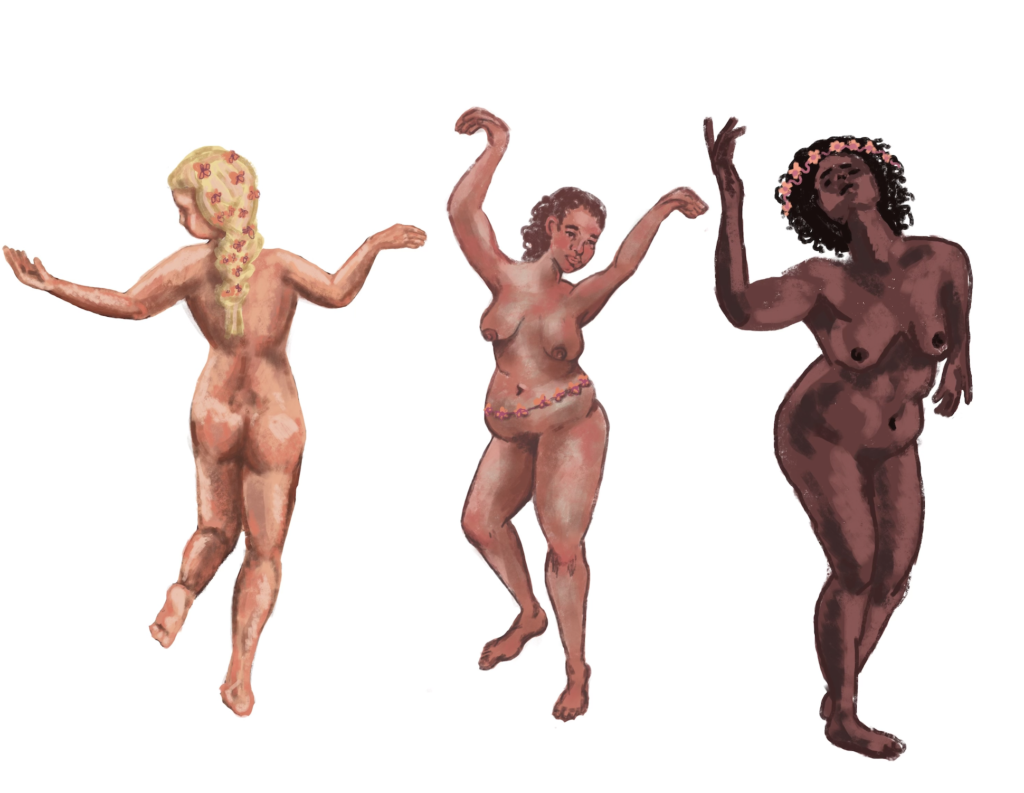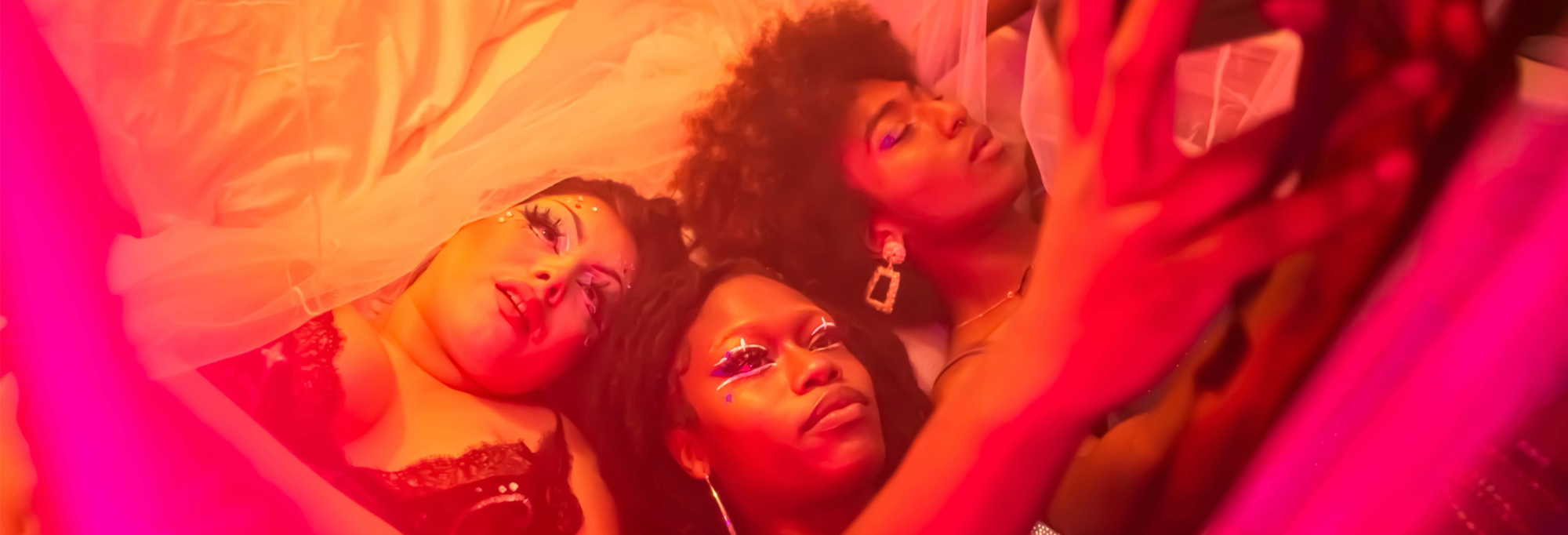The title nymph(o) likely resonates with many readers right away. For some, this title may conjure up images of the whimsical Greek mythological deities referred to as nymphs. For others, this title is perhaps reminiscent of the word “nymphomaniac,” a dated term typically used to refer to women with a large sexual appetite. Both hypotheses are correct, as the title is a combination of the two words, but the magazine nymph(o) expands past the inherent gendering of these words and is reclaimed to encapsulate the queer community and celebrate sex-positivity.
Nymphs are female deities who are represented frequently throughout European history. In paintings, nymphs will appear as “traditionally beautiful” (skinny, white, able-bodied) nude young women, though their nudeness is not meant to be inherently sexual. Instead, these nymphs are painted in the nude to represent the most natural state for all humans. They are protectors of the celestial, the water, land, plants, and the underworld and are portrayed in a natural, nude state to reflect these resources. However, due to tendencies throughout art and history to sexualize any and all women, nymphs have fallen prey to over-sexualization.

The word “nymph” was only further gendered and sexualized when Vladimir Nabokov used the term “nymphet” in his novel Lolita to categorize the pre-pubescent girls that the male main character made sexual advances towards. “Nymphomaniac” comes directly from this overt gendering of a word. In the late 18th century, doctors added the suffix “-mania” to “nymph” in order to refer to women who were “hyper-sexual.” As a result, “Nymphomaniac” emerged into everyday use, offering an inherently sexual connotation that was then applied to women, albeit negatively. Since then, sexually active women, feminists, queer individuals, and sex workers have often been slanderously labeled “nymphomaniacs,” implying they are perverse, deceitful, and led by a mission to corrupt others. This has contributed to the laws and attitudes that oppress said “nymphomaniacs.”
In response, my magazine nymph(o) proposes a new connotation for the word–a combination of “nymph” and “nymphomaniac” that surpasses any gendered expectation and aims to represent people for what and who they authentically are. We’ll borrow the layer of whimsy from the word “nymph,” and I think you’ll notice this in the magazine’s design. We’ll also flip the negative sexual connotation from the word “nymphomaniac,” crafting a magazine that celebrates a plethora of sexualities and identities. But our resulting word, nymph(o), and the magazine built around it, will come to mean much more.
